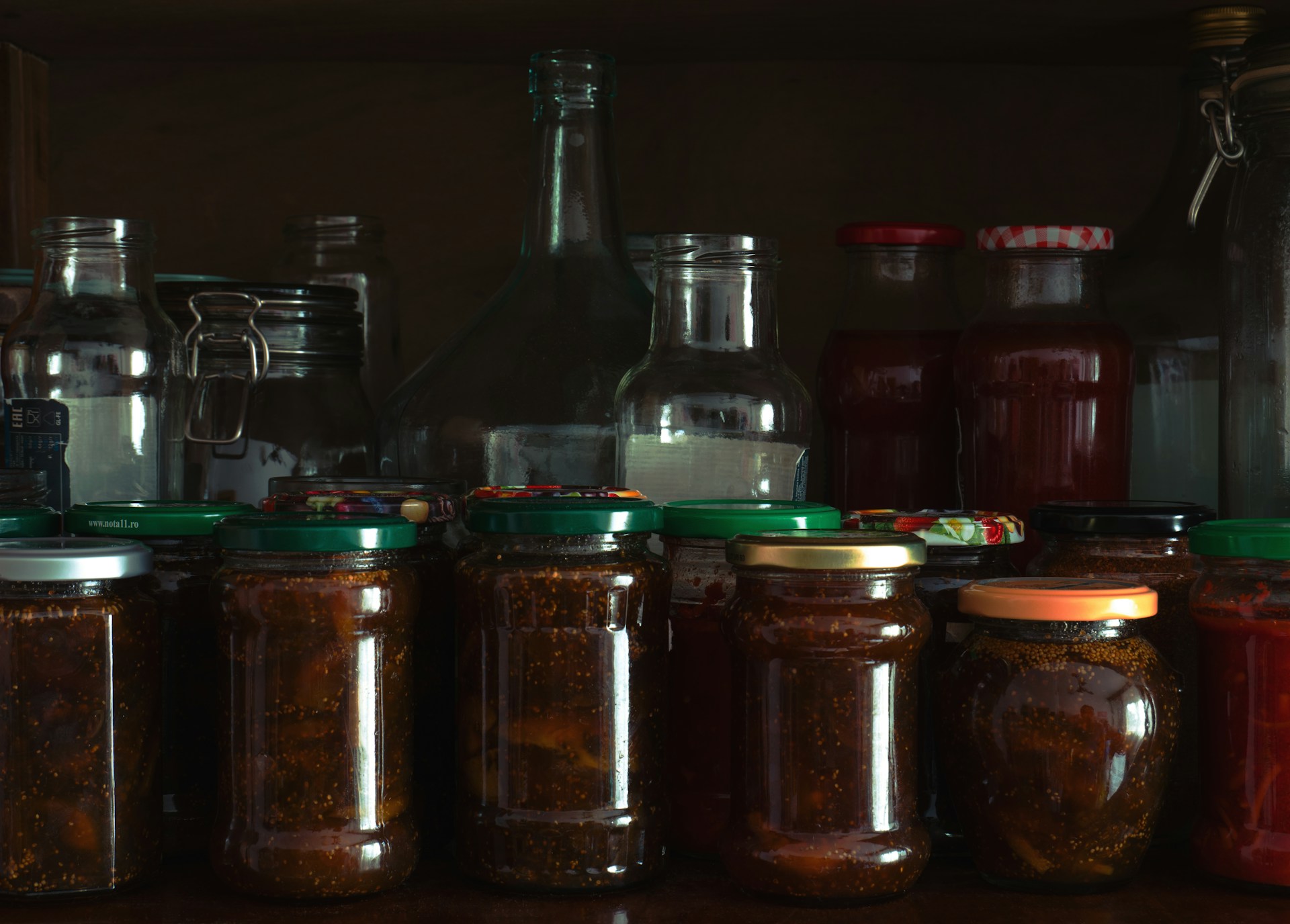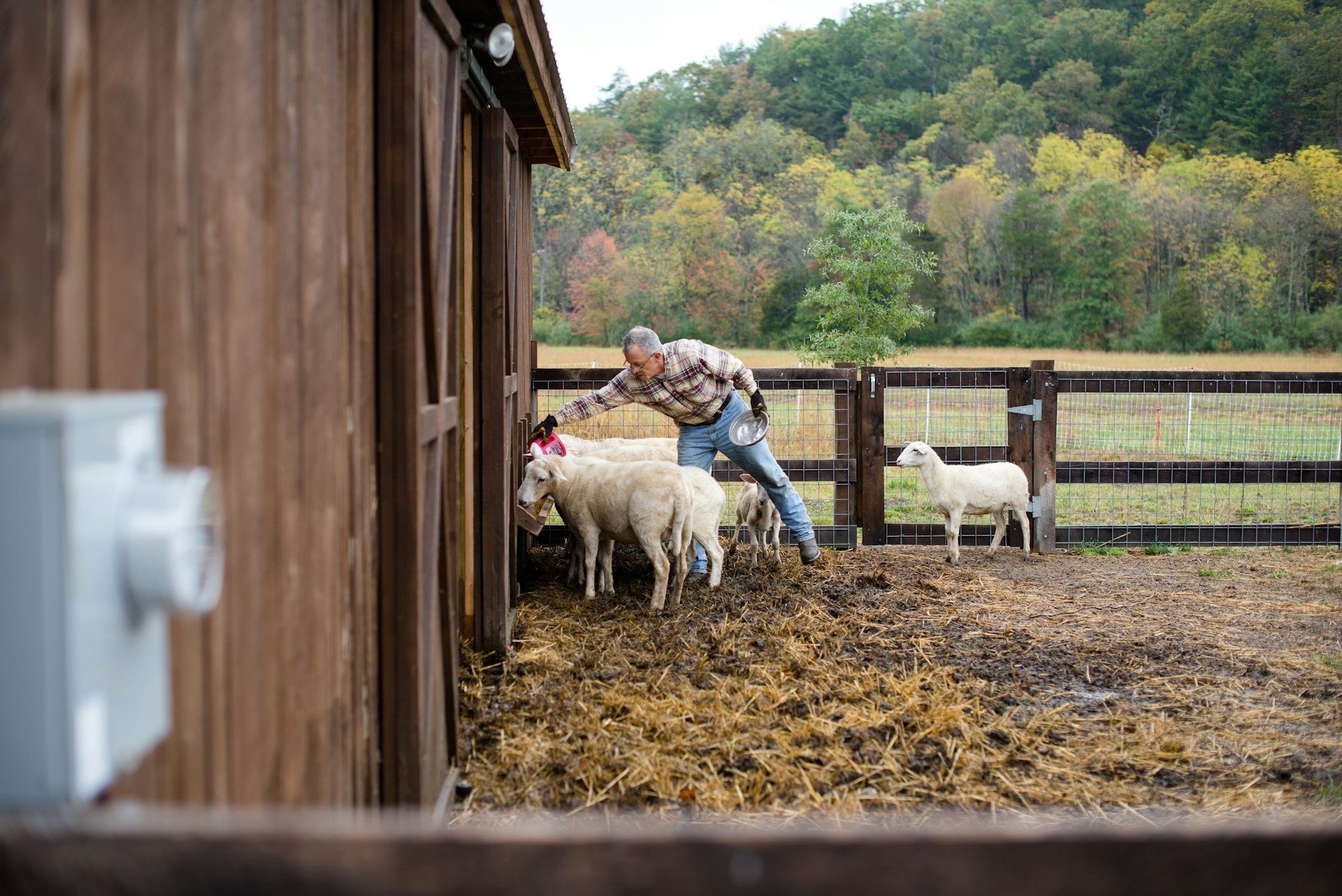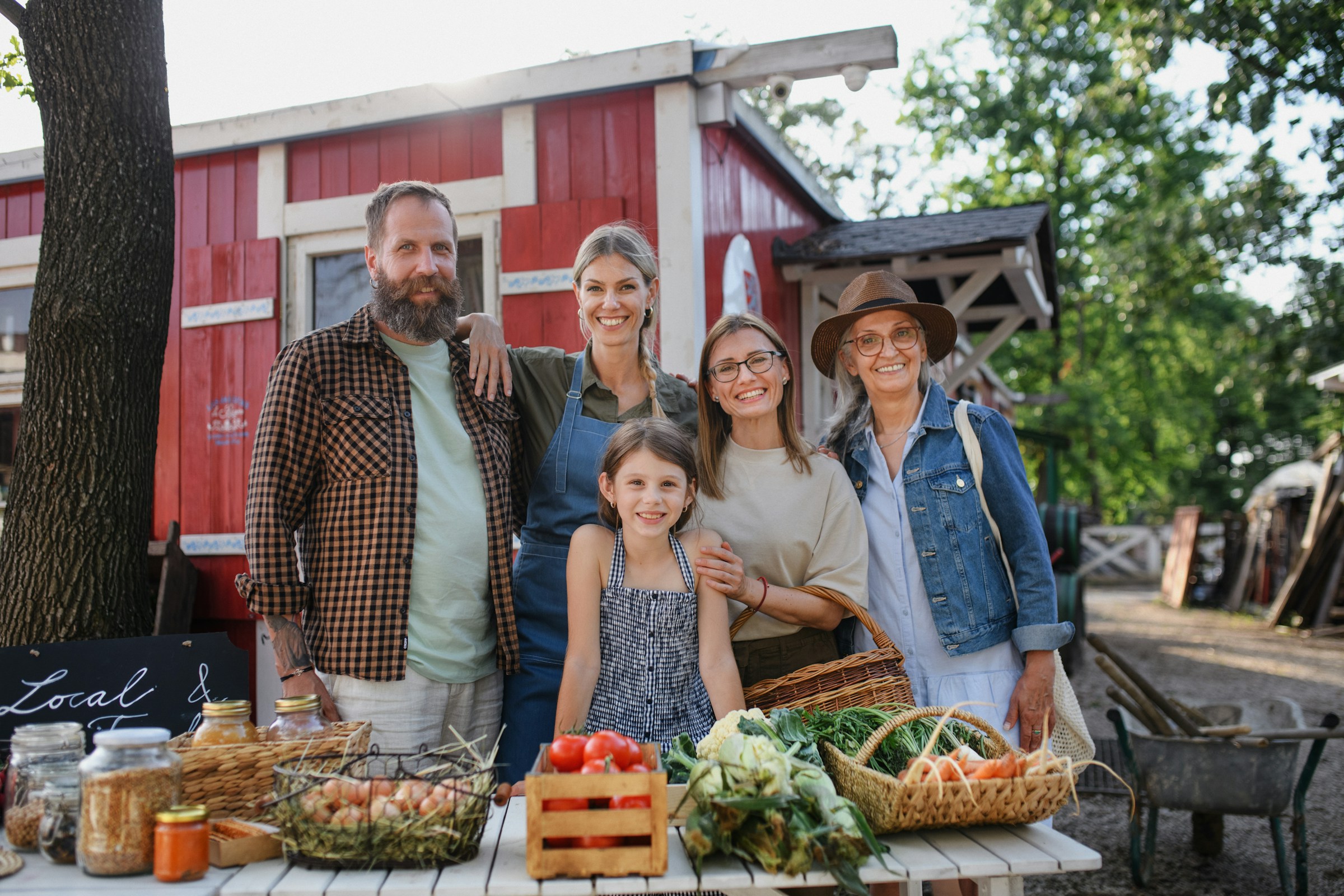Preparedness
Kentucky Sheriff Allegedly Kills Judge in Courthouse Confrontation

A tragic incident unfolded in a rural Kentucky courthouse on Thursday, where Letcher County Sheriff Shawn M. Stines, 43, allegedly shot and killed District Judge Kevin Mullins, 54.
The confrontation reportedly took place in the judge’s chambers following an argument between the two men.
According to the Associated Press (AP), the preliminary investigation indicates that Stines fired multiple gunshots at Mullins inside the courthouse.
Following the incident, Stines surrendered to authorities. He has since been charged with first-degree murder.
Kentucky State Police are currently investigating the motives and details behind the confrontation.
During a press briefing, police confirmed that no one else was in the chambers at the time of the shooting, although there were people present in the building.
Democratic Kentucky Governor Andy Beshear addressed the tragic event on social media.
“Sadly, I have been informed that a district judge in Letcher County was shot and killed in his chambers this afternoon. There is far too much violence in this world, and I pray there is a path to a better tomorrow,” Beshear wrote on Facebook.
The Kentucky Court of Justice also issued a statement regarding the incident.
“The Kentucky Court of Justice is aware of a tragic incident that occurred today in Letcher County. We are currently in contact with law enforcement agencies, including Kentucky State Police, and are offering our full support during this difficult time,” the statement reads.
“At this moment, we are not able to share further details, but we will provide updates as more information becomes available.”
Kentucky State Police did not immediately respond to requests for further comment.
The community remains in shock as authorities continue to piece together the events that led to this devastating occurrence.
Watch a local news report about the incident below:
Let us know what you think, please share your thoughts in the comments below.

Preparedness
Master Your Harvest: Essential Tips for Preserving Summer Bounty

When your summer garden is bursting with more produce than you can consume, it’s crucial to have a strategy to preserve your bounty. The simultaneous ripening of tomatoes, the accumulation of cucumbers, and the rapid bolting of herbs in the heat can lead to a surplus that, if not properly stored, will lose its flavor or eventually spoil. Without effective preservation, your hard-earned harvest becomes waste.
Preserving your summer harvest allows you to extend the enjoyment of your produce into the fall and winter months. This article explores three essential preservation methods: canning, freezing, and drying, each with straightforward steps and safety tips for beginners.
Summer is a season of abundance on the homestead, but this bounty is fleeting. Fresh produce is particularly susceptible to spoilage in hot or humid conditions. Without proper storage techniques, the fruits of your labor can quickly vanish.
Preservation not only reduces waste but also has several other benefits. It minimizes trips to the store during colder months, gives you control over the ingredients and quality of your food, and enhances food security using resources already available in your soil.
Each preservation method is best suited for different types of produce. Even if you’re new to these techniques, you can start with one and expand your skills over time. Canning provides pantry staples, freezing maintains flavor and texture, and drying requires minimal space while keeping herbs ready for use throughout the year.
Canning is an excellent way to store produce for a year or more. This method uses heat to create a vacuum seal in jars, preventing the growth of bacteria and mold. There are two safe canning methods: water bath canning for acidic foods and pressure canning for low-acid vegetables.
“Best for: jams, jellies, fruit preserves, pickles, tomatoes (with added acid).”
To begin canning, wash jars and lids, keeping jars warm until filled. After processing, remove jars and allow them to cool for 12 to 24 hours. For tested recipes and guidance, visit the National Center for Home Food Preservation.
Certain vegetables, like green beans, corn, and carrots, are too low in acid to be safely processed in a boiling water bath. Pressure canning uses higher heat to safely preserve these foods for long-term storage.
“Load jars into the canner and lock the lid. Bring to the correct pressure and start timing. Allow pressure to return to zero before opening.”
Freezing is a quick and flexible method for preserving most produce, maintaining food close to its original flavor and texture. However, many vegetables need blanching first to halt enzymes that cause spoilage.
“Blanch vegetables in boiling water for 1 to 4 minutes. Transfer to an ice bath. Drain and dry completely. Label with date and freeze flat to save space.”
Drying removes moisture to prevent spoilage and is particularly effective for herbs, sliced fruit, and thin vegetables like tomatoes or peppers.
“Dry at 125 to 135°F until brittle or leathery. Keep dried food in sealed containers away from light.”
Choosing the appropriate preservation method depends on the specific fruits and vegetables you have. Some require heat to stay safe, while others are best when frozen or dried. A quick reference chart can help match your produce with the best method, necessary tools, and typical shelf life.
Preserving your summer harvest requires patience and planning, but it rewards you every time you reach for a jar of home-canned sauce or a handful of dried herbs. These preserved foods offer more than just flavor; they embody value, effort, and security.
The habits you establish now will benefit you throughout the year. The more you store, the less you need from external sources, marking genuine progress on the homestead.
“What’s your favorite way to store your harvest? Drop your tips or go-to recipes in the comments below.”
Let us know what you think, please share your thoughts in the comments below.
Preparedness
Master Self-Sufficiency: Tips for Going Off-Grid Effortlessly

The journey towards a self-sufficient lifestyle is a profound one, often sparked by the desire to reduce reliance on external systems and embrace a more autonomous way of living. While the idea of completely going off-grid may seem daunting, there are practical steps you can take to ease into this lifestyle transition.
A foundational step in becoming self-sufficient is growing your own food. This not only provides sustenance but also instills confidence in your ability to support your family independently. Begin small with a kitchen garden, cultivating herbs and gradually expanding to a backyard garden with vegetables your family enjoys.
As you gain experience, consider planting successive crops. This technique involves planting seeds at intervals of 7 to 21 days, ensuring a steady supply of produce. Additionally, if space permits, planting fruit trees or shrubs can diversify your food sources, offering fruits and berries.
Composting is another essential practice for those seeking self-sufficiency. It maximizes the use of available resources and significantly enriches the soil for your garden. “It’s making use of what you have and not wasting it.” Seed saving is equally important, allowing you to maintain a sustainable food supply year after year.
Incorporating protein into your diet through self-sufficient means involves raising livestock. Many start with chickens for a steady supply of fresh eggs. If space allows, consider raising a dairy animal, bringing you closer to a self-sufficient lifestyle. Moreover, learning to butcher livestock and mastering hunting and fishing are invaluable skills that ensure you never go hungry.
Transitioning to off-grid living also requires adapting your cooking habits. If you’re accustomed to dining out or using pre-made products, now is the time to learn to cook from scratch. Start with simple dishes using homegrown ingredients and gradually progress to making your own dairy products, such as butter.
Water independence is crucial for off-grid living. Installing a well on your property provides a reliable water source. “Wells are very reliable water sources.” Additionally, collecting rainwater can supplement your water needs, especially for agricultural purposes.
Energy self-sufficiency is another key aspect of off-grid living. Explore alternative energy sources like solar power, wind turbines, or micro-hydro systems, depending on your location. If a full transition isn’t feasible immediately, begin by investing in green energy tools and energy-efficient appliances.
Heating your home sustainably is vital, especially during colder months. A wood-burning fireplace or stove is an excellent investment for this purpose. To prepare for unexpected energy shortages, keeping a backup generator is wise.
Adopting a self-sufficient mindset involves changing daily habits. Line-drying clothes, reusing items, and attempting DIY projects before seeking outside help are practical steps. “Homesteaders should never throw anything away until they have considered how they may reuse it.”
Long-term preparation is critical for a self-sufficient lifestyle. Learn various food preservation methods, such as canning and dehydrating, to ensure your pantry remains stocked with essentials like rice, beans, and pasta. By taking these steps, you can gradually transition to a more self-reliant and fulfilling way of life.
Let us know what you think, please share your thoughts in the comments below.
Preparedness
Unlock Homesteading Secrets for Tiny Spaces and Ultimate Self-Reliance

If you’ve ever thought that homesteading is out of reach due to limited space, it’s time to rethink that notion. With a bit of ingenuity, you can adopt the homesteading lifestyle even in the smallest of areas. Whether you’re working with a modest backyard, a balcony, or just a windowsill, transforming your space into a hub of sustainable living is entirely feasible.
One crucial strategy for small-space gardening is to “think vertically.” Vertical gardening maximizes available space by making use of walls, fences, and trellises. Consider investing in or crafting your own hanging or vertical planters from repurposed materials. This approach enables you to cultivate a diverse array of herbs, vegetables, and even fruits within your limited area.
For those with a balcony, porch, or windowsill, container gardening offers a versatile solution. Select pots of varying sizes and materials, ensuring they have adequate drainage. A lightweight potting mix is ideal, and self-watering containers can add convenience to your gardening efforts.
Starting your homestead with herbs is both easy and rewarding. Herbs like basil, mint, rosemary, thyme, and parsley are compact and thrive in small spaces. “Snip some fresh herbs whenever you need them, and savor the taste of homegrown goodness.”
Collecting rainwater doesn’t require a vast expanse. Install rain barrels or small water tanks to gather rainwater from your roof or balcony. This practice not only nourishes your plants but also diminishes your dependence on municipal water supplies.
Composting is a fundamental practice for any homesteader, regardless of space limitations. Kitchen scraps, yard waste, and even some paper products can be composted. Explore methods such as worm composting or bokashi composting, which are well-suited for small spaces. This not only reduces waste but also generates nutrient-rich soil for your plants.
Repurposing and upcycling are at the heart of the homesteading spirit, and space constraints are no barrier. Transform old pallets into raised beds, start seeds in mason jars, or turn old furniture into planters. The possibilities are endless, allowing you to save money while adding a personal touch to your homestead.
Self-sufficiency is a core aspect of homesteading, and it isn’t limited by the size of your space. Learning essential survival skills, like building a fire or purifying water, is invaluable. Engage in survival classes, join local garden clubs, and connect with local farmers. “The key is to get started and prepare now for unforeseen disasters.”
Let us know what you think, please share your thoughts in the comments below.
-

 Tactical1 year ago
Tactical1 year ago70-Year-Old Fends Off Intruder with Lead-Powered Message
-

 Tactical1 year ago
Tactical1 year agoVape Shop Employee Confronts Armed Crooks, Sends Them Running
-

 Preparedness11 months ago
Preparedness11 months agoEx-Ballerina’s Guilty Verdict Sends Tremors Through Gun-Owner Community
-

 Preparedness10 months ago
Preparedness10 months agoGood Samaritan Saves Trooper in Harrowing Interstate Confrontation
-

 Tactical1 year ago
Tactical1 year agoMidnight SUV Theft Interrupted by Armed Homeowner’s Retaliation
-

 Survival Stories2 years ago
Survival Stories2 years agoEmily’s 30-Day Experience of Being Stranded on a Desert Island
-

 Preparedness10 months ago
Preparedness10 months agoArizona Engineer’s Headless Body Found in Desert: Friend Charged
-

 Preparedness10 months ago
Preparedness10 months agoBoy Saves Dad from Bear Attack with One Perfect Shot
Old Man
September 28, 2024 at 12:17 pm
In a rural Kentucky courthouse on Thursday, Letcher County Sheriff Shawn M. Stines, 43, allegedly shot and killed District Judge Kevin Mullins, 54.
It’s a start.